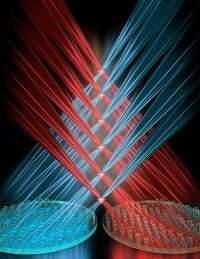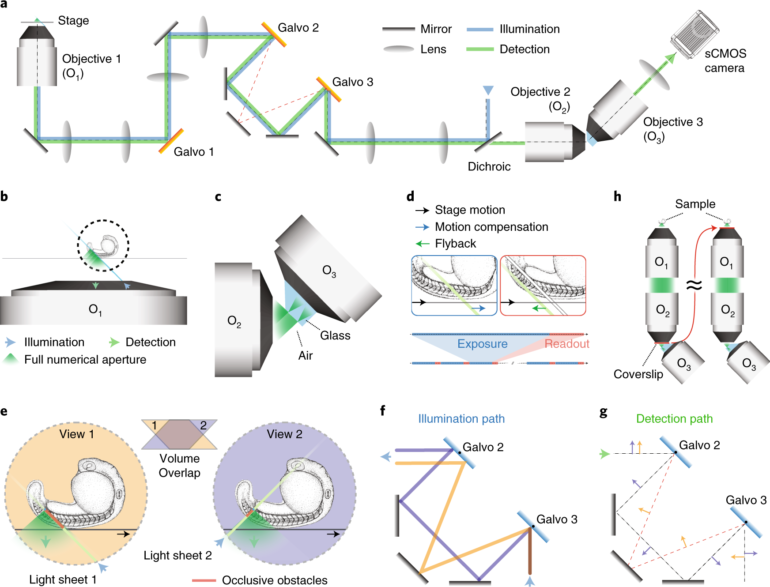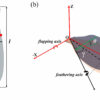Imaging technologies are key to modern medicine and diagnosis at an early stage, potentially improving patient outcomes. Microscopic imaging allows researchers and professionals to look directly into cells, making it possible to visualize structures and processes that were once invisible. However, an important limitation of current technology is that microscopic imaging in high-resolution is limited to bidimensional (2D) images obtained in microscope slides, while tissue structures are tridimensional (3D). For decades, scientists have been looking for a way to address this challenge and obtain 3D microscopic images.
A paper published in Nature Photonics co-authored by Majid Pahlevani (Electrical and Computer Engineering) and collaborators at Harvard University describes a new technique that can enhance state-of-the-art microscopes, allowing an increase in image resolution, while also making 3D microscopic imaging possible.
One of the main challenges of imaging on a microscopic scale is tackling diffraction—the rapid spread of tightly focused light—as the phenomenon hampers the obtainment of high-resolution images. In the study, the researchers show that a particular disposition of light and a path created by an ultra-thin optical component composed of an array of nanocolumns on a glass surface (see figures A and B) can break the limitations otherwise imposed by diffraction, thus solving the problem. An optical lens with this arrangement could be built into the next generation of microscopic imaging devices.
“This method, named bijective illumination collection imaging (BICI), can extend the range of high-resolution imaging by over 12-fold compared to the state-of-the-art imaging techniques,” says Pahlevani, an expert in energy and power electronics and their applications in healthcare. He is a member of the Queen’s Centre for Energy and Power Electronics Research (ePOWER). “Unlike conventional imaging techniques, in BICI, the light which illuminates the target and the light collected from the target are distributed along the depth using the nanostructures, making it possible to preserve high resolution imaging along a large depth into the tissue.”

The image illustrates the novel Bijective Illumination Collection Imaging (BICI) concept using metasurfaces. © Queen’s University
Microscopic imaging in three dimensions enables numerous biological and clinical applications, like providing insight into the intercellular mechanisms, and enabling cancer cell detection and in vivo (in the body) real-time diagnosis.
Another key benefit of the new method is how fast it is to process. “Computationally intensive techniques result in slow imaging, which is not suitable for in vivo imaging,” explains Dr. Pahlevani. “Organs in live patients are not stationary and move, which give rise to artifacts in imaging. Therefore, in vivo imaging requires fast techniques.” Because the new proposed technique is an optical solution for increasing microscopic imaging resolution, it does not require additional computational capacity.
The Nature Photonics paper highlights cancer diagnoses as one of the main applications for the new method: “Pathological changes in the early stages of diseases like cancer are often very subtle and can be easily overlooked. In vivo high-resolution imaging maintained in a large depth range has the potential to enable early and accurate detection and diagnosis.” Dr. Pahlevani is confident BICI can be applied to several existing imaging techniques.
More information:
Masoud Pahlevaninezhad et al, Metasurface-based bijective illumination collection imaging provides high-resolution tomography in three dimensions, Nature Photonics (2022). DOI: 10.1038/s41566-022-00956-6
Provided by
Queen’s University
Citation:
New microscopic imaging method allows capture of high resolution and tridimensional images (2022, March 22)



